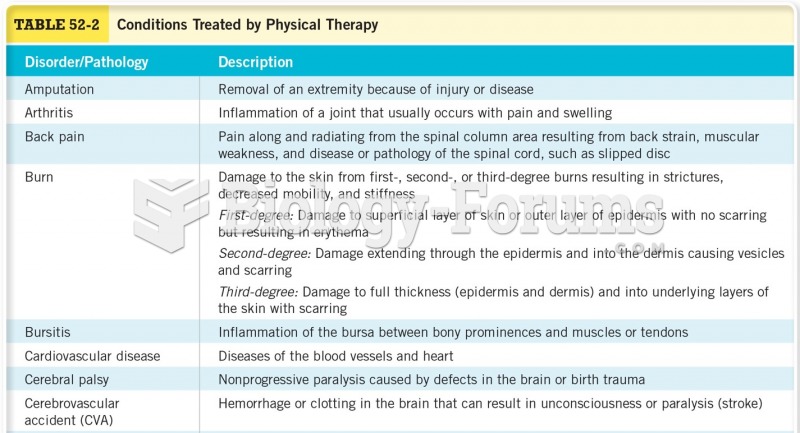Answer to Question 1
1
Rationale 1: Hormone replacement therapy (HRT) is an option, but the client should have all available information to make an informed decision. The nurse should discuss alternate methods of dealing with premenopausal symptoms.
Rationale 2: The client should have information about available alternate methods prior to seeing the physician.
Rationale 3: The nurse does not need to assess risk factors for hormone replacement therapy (HRT) until the client has made the decision to receive it.
Rationale 4: The client is asking for assistance with premenopausal symptoms; she should not have to wait until menopause.
Global Rationale: Hormone replacement therapy (HRT) is an option, but the client should have all available information to make an informed decision. The nurse should discuss alternate methods of dealing with premenopausal symptoms. The client should have information about available alternate methods prior to seeing the physician. The nurse does not need to assess risk factors for hormone replacement therapy (HRT) until the client has made the decision to receive it. The client is asking for assistance with premenopausal symptoms; she should not have to wait until menopause.
Answer to Question 2
4
Rationale 1: Thiothixene (Navane) is anonphenothiazine and is in the same class as haloperidol (Haldol).
Rationale 2: Loxapine (Loxitane)is a nonphenothiazine and is in the same class as haloperidol (Haldol).
Rationale 3: Pimozide (Orap)is a nonphenothiazine and is in the same class as haloperidol (Haldol).
Rationale 4: Abilify has less EPS and anticholinergic symptoms than does Haldol.
Global Rationale: Thiothixene (Navane), loxapine (Loxitane), and pimozide (Orap) are all nonphenothiazines. The nonphenothiazines offer no significant advantages over the treatment of schizophrenia.Aripi prazole (Abilify), which is a third-generation antipsychotic, has less EPS and anticholinergic symptoms than does Haldol.







